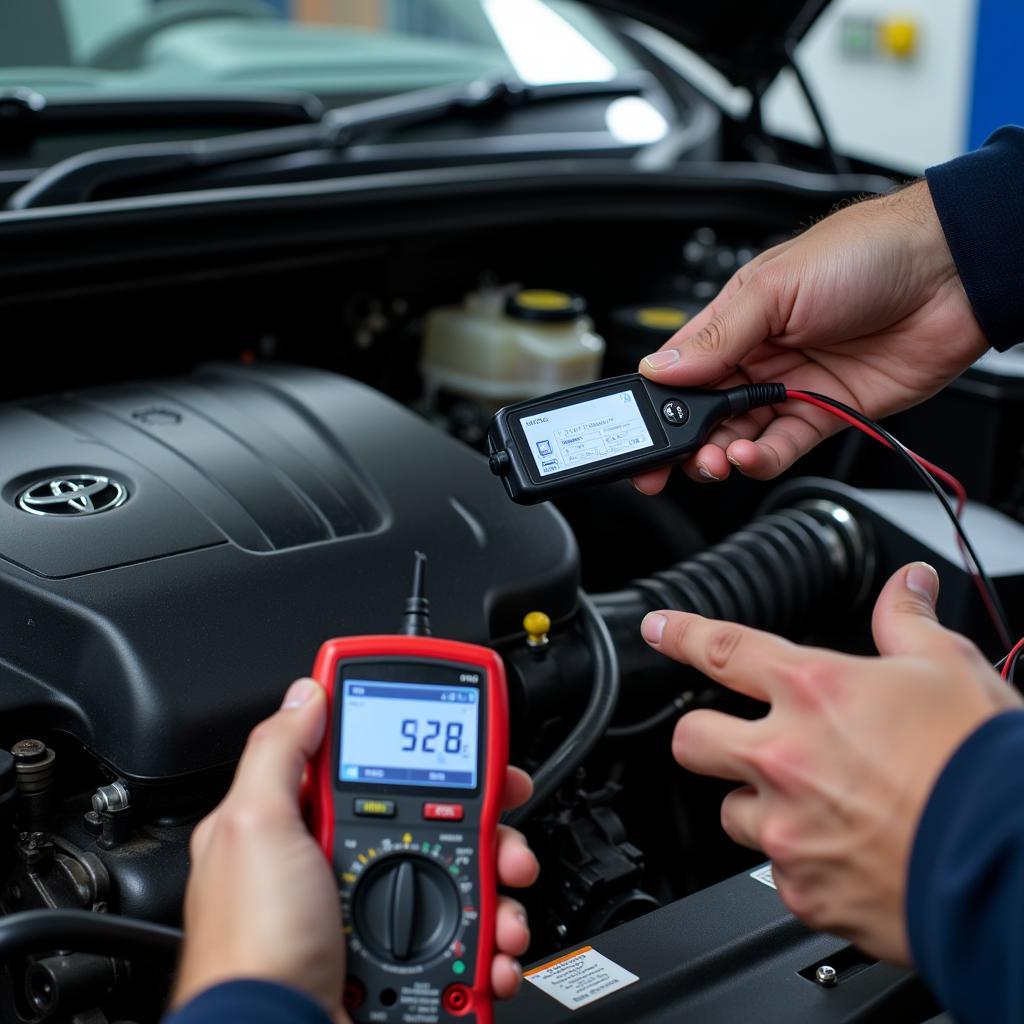When it comes to reliability and technological innovation, Japanese cars are often top of mind for many drivers. However, even the most well-crafted vehicles require regular maintenance and occasional repairs. That’s where having access to the Best Japanese Cars Diagnostic tools and information becomes invaluable. Whether you’re a seasoned mechanic or a car enthusiast looking to understand your vehicle better, this guide will equip you with the knowledge you need to make informed decisions about your Japanese car’s health.
 Mechanic using various diagnostic tools on a Japanese car engine
Mechanic using various diagnostic tools on a Japanese car engine
Understanding the Importance of Japanese Car Diagnostics
Modern Japanese cars are equipped with sophisticated computer systems that monitor and control various aspects of the vehicle’s performance. When a problem arises, these systems generate Diagnostic Trouble Codes (DTCs) which act as clues to pinpoint the root cause. Proper diagnostics go beyond just reading these codes; it involves understanding the context, analyzing related data, and utilizing your expertise to determine the most effective repair strategy.
Choosing the Right Diagnostic Tools for Your Needs
 OBD-II scanner plugged into a car’s diagnostic port
OBD-II scanner plugged into a car’s diagnostic port
The market is flooded with a vast array of diagnostic tools, from basic code readers to advanced professional-grade scanners. For most Japanese car owners, an OBD-II scanner is an essential tool. These handheld devices connect to your car’s onboard computer through the OBD-II port, allowing you to read and clear DTCs, view live data streams, and perform various other diagnostic functions.
Here are some key features to consider when selecting an OBD-II scanner:
- Vehicle Coverage: Ensure the scanner supports the make, model, and year of your Japanese car.
- Functionality: Determine the specific diagnostic capabilities you need, such as reading and clearing codes, viewing live data, and performing special functions.
- User Interface: Opt for a scanner with a clear and intuitive interface that’s easy to navigate.
- Updates: Choose a scanner that offers regular software updates to stay compatible with the latest vehicle models and diagnostic protocols.
Common Diagnostic Trouble Codes (DTCs) in Japanese Cars
While DTCs vary depending on the car manufacturer and model, some codes are commonly encountered across various Japanese car brands. Here are a few examples:
- P0420: Catalyst System Efficiency Below Threshold (Bank 1) – This code often indicates a problem with the catalytic converter.
- P0171: System Too Lean (Bank 1) – This code suggests an issue with the air/fuel mixture, possibly caused by a vacuum leak or faulty oxygen sensor.
- P0300: Random/Multiple Cylinder Misfire Detected – This code indicates engine misfires, which can be triggered by various factors like faulty spark plugs, ignition coils, or fuel injectors.
 Mechanic reviewing diagnostic data on a laptop in a repair shop
Mechanic reviewing diagnostic data on a laptop in a repair shop
Remember: These are just a few examples, and DTCs should always be interpreted in conjunction with other symptoms and diagnostic findings.
Expert Insight:
“Many car owners underestimate the value of preventative maintenance,” says Master Technician Hiroshi Sato, with over 20 years of experience working on Japanese cars. “Regularly scanning your car for potential issues and addressing them early can save you significant time, money, and headaches in the long run.”
Conclusion
Having the right knowledge and tools to perform diagnostics on your Japanese car empowers you to take control of your vehicle’s maintenance and make informed repair decisions. By understanding the intricacies of Japanese car diagnostics, you can ensure your prized possession continues to deliver a smooth, reliable, and enjoyable driving experience for miles to come.

Leave a Reply